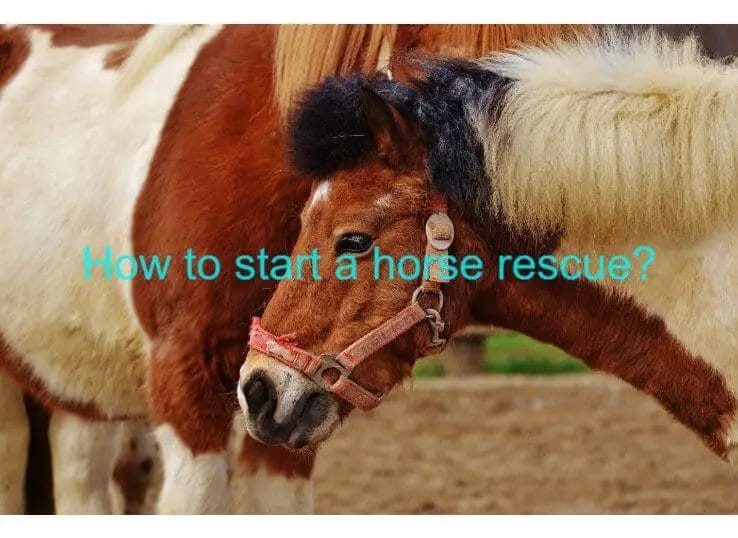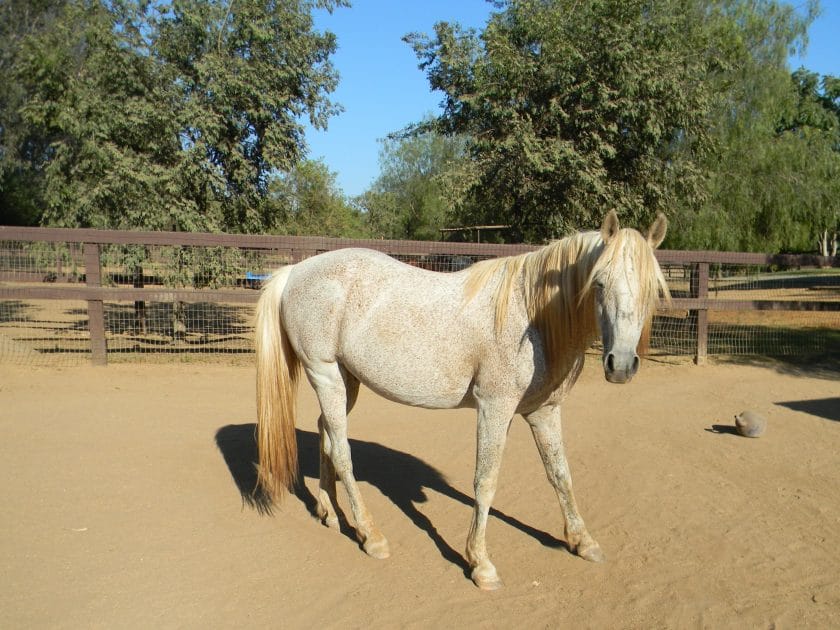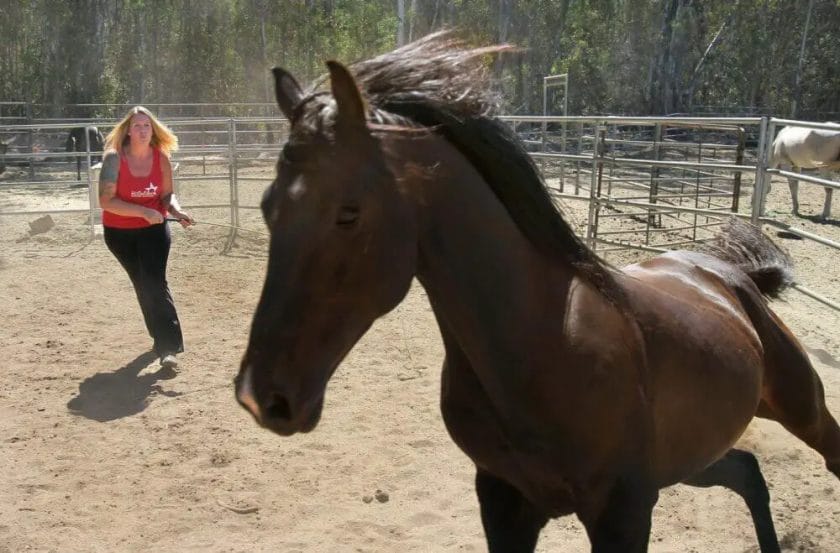If you have a passion for horses and a desire to make a difference, starting a horse rescue can be a rewarding endeavor. By providing a safe haven for neglected and abused horses, you can help rehabilitate and rehome them, giving them a second chance at a happy and healthy life. However, starting a horse rescue requires careful planning, dedication, and resources. This guide will walk you through the essential steps to set up a successful horse rescue and make a positive impact in the lives of these majestic animals.

Setting Up the Infrastructure: Building Facilities and Enclosures for Your Rescue Horses
When it comes to rescuing horses, providing them with a safe and comfortable environment is essential for their well-being. Building proper facilities and enclosures is a crucial step in setting up the infrastructure for your rescue horses. In this section, we will discuss the key elements and considerations for creating a suitable space for your horses.
1. Fencing
The first and foremost requirement for any horse enclosure is secure fencing. The fencing should be sturdy and tall enough to prevent the horses from jumping over or escaping. There are various types of fencing options available, including wooden board fences, PVC fences, and electric fences. Choose a fence that suits your budget, climate, and the specific needs of your rescue horses.
2. Shelter
Providing adequate shelter is important to protect your horses from harsh weather conditions. Building a well-constructed shelter such as a stable or run-in shed can provide a safe haven for the horses during extreme heat, cold, or rain. Make sure the shelter is spacious enough to accommodate all the horses comfortably and is well-ventilated to ensure proper air circulation.
3. Pasture and Paddock
Having a dedicated pasture and paddock area is essential to allow your rescue horses to graze and move around freely. Ensure that the pasture is properly fenced and free from any harmful plants or toxins. It’s important to monitor the quality of the pasture and rotate grazing areas to prevent overgrazing and maintain the nutritional balance for the horses.
4. Water and Feeding Stations
Access to fresh, clean water is crucial for the health and well-being of your rescue horses. Install automatic waterers or provide large troughs that are filled regularly to ensure a constant supply of water. Set up feeding stations that are easily accessible for the horses and ensure proper storage and handling of feed to prevent spoilage and contamination.
5. Grooming and Healthcare Facilities
Creating designated areas for grooming and healthcare activities is important for maintaining the overall health of your rescue horses. Install a wash stall or designated grooming area equipped with proper drainage and supplies for bathing, grooming, and hoof care. Additionally, set up a separate area or a small barn for veterinary examinations, vaccinations, and other healthcare procedures.
6. Tack and Storage Room
A dedicated tack and storage room is essential for organizing and storing horse equipment, saddles, bridles, and other essential items. This will help keep the area clean and clutter-free, ensuring easy accessibility and proper maintenance of the equipment.
7. Lighting and Security
Installing proper lighting in your horse facilities is important for safety and security purposes. Well-lit areas will help prevent accidents and allow for better visibility during nighttime activities. Additionally, consider implementing security measures such as surveillance cameras or motion sensor lights to protect your horses and deter any potential trespassers or threats.
In summary, building suitable facilities and enclosures for your rescue horses is a crucial step in their rehabilitation and well-being. Ensure secure fencing, provide adequate shelter, create pasture and paddock areas, establish water and feeding stations, designate grooming and healthcare facilities, set up a tack and storage room, and install proper lighting and security measures. Taking these steps will help create a safe and comfortable environment for your rescue horses to thrive.

Forming Relationships: Building Connections with Local Veterinarians and Animal Welfare Organizations
Forming relationships with local veterinarians and animal welfare organizations is a crucial step in establishing a successful and thriving animal care business. These connections not only provide valuable resources and support, but also help to enhance the reputation and credibility of your business within the community.
1. Research and Identify Local Veterinarians:
Start by researching and identifying the local veterinarians in your area. Look for those who specialize in small animal care or have a focus on the types of animals you plan to work with. Consider factors such as proximity, reputation, and the services they offer.
Once you have identified potential veterinarians, reach out to them to introduce yourself and express your interest in building a collaborative relationship. Offer to meet in person to discuss how you can support each other in providing the best care for animals in the community.
2. Collaborate on Animal Care:
Collaborating with local veterinarians is essential for providing comprehensive care to animals. Offer to work together on cases that require both veterinary expertise and your specialized care. This can include referrals, regular check-ins, and sharing knowledge and resources.
Establish clear communication channels and protocols to ensure a seamless partnership. This can include regular meetings or check-ins, sharing medical records and treatment plans, and discussing any updates or changes in the animal’s condition or care needs.
3. Volunteer and Support Animal Welfare Organizations:
Getting involved with local animal welfare organizations is not only a way to give back to the community but also an opportunity to network and build relationships with like-minded individuals. Volunteer your time and skills at events, fundraisers, and adoption drives organized by these organizations.
By actively participating in their initiatives, you can showcase your commitment to animal welfare and create opportunities for collaboration and referral. You can also offer to provide discounted or pro bono services to animals in need that are under the care of these organizations.
4. Attend Professional Conferences and Events:
Attending professional conferences and events related to animal care and welfare is a great way to meet and connect with veterinarians and industry experts. These events provide opportunities to learn about the latest advancements in animal care, share knowledge and best practices, and build relationships with professionals in the field.
Engage in conversations, ask questions, and exchange contact information to follow up and continue the dialogue after the event. Building connections through professional networks can lead to collaborations, referrals, and valuable partnerships.
5. Establish a Referral Network:
Developing a referral network with local veterinarians and animal welfare organizations is mutually beneficial. Create a system where you can refer clients to veterinarians for medical care and receive referrals from them for specialized services that you provide.
This referral network strengthens the bond between your businesses and enhances the overall care and well-being of animals in the community. Regularly communicate with your referral partners to maintain a strong working relationship and ensure a seamless transition of care for the animals.
Summary:
Forming relationships with local veterinarians and animal welfare organizations is vital for a successful animal care business. By researching and identifying local veterinarians, collaborating on animal care, volunteering for animal welfare organizations, attending professional events, and establishing a referral network, you can build strong connections that benefit both your business and the animals in your care.

Fundraising Strategies: Raising Funds to Support Your Horse Rescue Operation
Raising funds for a horse rescue operation is no easy task. It requires careful planning, strategic thinking, and a well-executed fundraising strategy. In this section, we will explore some effective fundraising strategies that can help you generate the financial resources needed to support your horse rescue operation.
1. Organize Fundraising Events
One of the most popular and effective ways to raise funds is through organizing fundraising events. These events can range from simple bake sales and yard sales to more elaborate charity galas or horse shows. The key is to create an event that appeals to your target audience while also aligning with your mission as a horse rescue organization.
Consider hosting a charity horse show where participants can compete in various equestrian disciplines while raising funds for your rescue operation. You can also organize a benefit concert, a silent auction, or a fun run. Be creative and think outside the box to come up with unique and engaging fundraising event ideas.
2. Peer-to-Peer Fundraising
Peer-to-peer fundraising is a strategy that leverages the power of social networks and personal connections. It involves encouraging your supporters and volunteers to create their own fundraising campaigns on your behalf.
Provide them with the necessary tools and resources to set up personalized fundraising pages and guide them on how to effectively promote their campaigns through social media, email, or word-of-mouth. This strategy not only helps you raise funds but also expands your reach and engages new supporters.
3. Grant Writing and Sponsorship
Another viable option for funding your horse rescue operation is through grant writing and seeking corporate sponsorships. Research and identify charitable foundations or organizations that share a similar mission or have an interest in animal welfare.
Develop compelling grant proposals that clearly outline your organization’s goals, impact, and how the funds will be utilized. Similarly, reach out to local businesses or corporations and present them with sponsorship opportunities. Highlight the benefits of sponsoring your rescue operation, such as brand visibility, positive community impact, and potential tax deductions.
4. Online Fundraising Platforms
In today’s digital age, online fundraising platforms have become increasingly popular and effective. These platforms provide a convenient way for individuals to donate to your cause, share your mission with others, and track fundraising progress.
Create a compelling campaign on a reputable online fundraising platform, share it on your social media channels, website, and email newsletters. Utilize storytelling techniques and visually appealing content to engage potential donors and inspire them to make a contribution.
5. Donor Stewardship and Appreciation
Donor stewardship is a critical aspect of fundraising that should not be overlooked. Cultivating strong relationships with your donors and showing appreciation for their support can significantly impact their willingness to continue giving.
Regularly communicate with your donors, providing updates on your rescue operation’s progress and the impact their contributions have made. Send personalized thank-you notes, hold exclusive events or webinars for donors, and recognize their generosity publicly through social media or newsletters.
In summary, fundraising for a horse rescue operation requires creativity, perseverance, and a comprehensive strategy. By organizing fundraising events, leveraging peer-to-peer fundraising, exploring grant opportunities and sponsorships, utilizing online platforms, and cultivating donor relationships, you can generate the financial resources needed to support and expand your horse rescue operation.
Outreach and Adoption Programs: Finding Loving Homes for Rescued Horses
Rescuing horses in need is a noble and compassionate act. However, the work does not end with their rescue. It is equally important to find suitable homes where these horses can thrive and receive the love and care they deserve. This is where outreach and adoption programs play a crucial role.
Outreach programs are designed to create awareness about the availability of rescued horses and educate the public about their needs. They aim to reach out to potential adopters, horse lovers, and the community at large. These programs utilize various channels such as social media, websites, and local events to spread the word.
One of the main objectives of outreach programs is to dispel myths and misconceptions surrounding rescued horses. Many people believe that these horses are aggressive, untrainable, or have behavioral issues. Outreach programs aim to educate the public about the true nature of these horses and highlight their potential as loving, loyal companions.
Adoption programs are the next step in the process. They involve a thorough screening process to ensure that the potential adopter is a good fit for the horse and has the knowledge and resources to care for them properly. This includes assessing their experience with horses, the suitability of their facilities, and their ability to provide necessary veterinary care.
Adoption programs often have a network of foster homes where horses can be placed temporarily until a suitable permanent home is found. Foster homes provide the opportunity for the horse to receive individualized care, training, and attention while they await adoption.
It is essential for adoption programs to provide ongoing support to adopters. This includes guidance on horse care, training, and behavior management. Many programs also offer post-adoption check-ins and assistance in case any issues arise. The goal is to ensure that the horse and adopter have a successful and fulfilling relationship for years to come.
Successful outreach and adoption programs rely heavily on collaboration with other equine organizations, such as rescue groups, sanctuaries, and equestrian clubs. By working together, these organizations can pool their resources, share knowledge and expertise, and increase the chances of finding suitable homes for rescued horses.
Additionally, partnerships with local businesses and community members can greatly contribute to the success of outreach and adoption programs. Sponsoring events, providing financial support, or offering discounts on supplies can help generate awareness, attract potential adopters, and ensure the long-term sustainability of these programs.
In summary, outreach and adoption programs are vital in finding loving homes for rescued horses. They help create awareness, educate the public, and ensure that potential adopters are well-prepared to provide the necessary care and attention. By working together and engaging the community, these programs have the power to make a lasting impact on the lives of rescued horses.
Frequently Asked Questions
Q: How can I start a horse rescue?
Starting a horse rescue involves several steps. First, research the legal requirements and regulations in your area. Next, create a business plan outlining your goals, funding sources, and operational details. Secure a suitable property with adequate facilities for housing and caring for horses. Establish relationships with veterinarians and other professionals in the equine industry. Finally, develop a network of volunteers and supporters to help with daily operations and fundraising.
Q: What are some important factors to consider when starting a horse rescue?
When starting a horse rescue, it’s crucial to consider factors such as funding, facilities, and expertise. Ensure you have a sustainable source of funding to cover the costs of horse care, including feed, veterinary care, and shelter. Have suitable facilities, including pastures, barns, and fencing, to provide a safe and comfortable environment for the horses. Additionally, having knowledgeable staff or volunteers with experience in horse care is essential to ensure the well-being of the rescued horses.
Q: What are some fundraising options for a horse rescue?
There are various fundraising options for a horse rescue, including organizing events such as benefit dinners, auctions, or horse shows. Seeking donations from individuals or businesses in the community is another effective way to raise funds. Grant applications to foundations and organizations that support animal welfare can also be a viable option. Additionally, online crowdfunding platforms can help reach a wider audience and raise necessary funds for the horse rescue.
Conclusion
In conclusion, starting a horse rescue can be a fulfilling and rewarding endeavor. By following the steps mentioned above, such as conducting research, obtaining the necessary permits and licenses, securing adequate funding, and building a network of professionals and volunteers, you can successfully launch your horse rescue. Remember to prioritize the well-being and welfare of the horses, providing them with a safe and nurturing environment. With determination, passion, and dedication, your horse rescue can make a significant impact on the lives of these magnificent creatures.
Furthermore, spreading awareness about horse rescue issues through social media channels, local events, and collaborations with other animal welfare organizations can help garner support and attract potential donors and volunteers. Building strong relationships with the equine community, veterinarians, and local authorities can also contribute to the success and sustainability of your horse rescue. By effectively managing resources, continuously learning and adapting, and always putting the horses’ best interests first, your horse rescue can make a lasting difference in the lives of abused, neglected, or unwanted horses.
